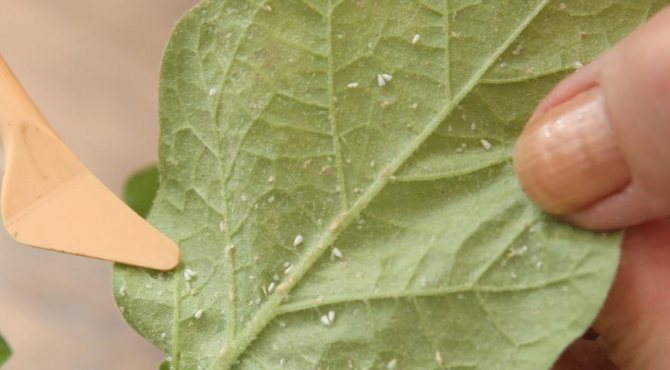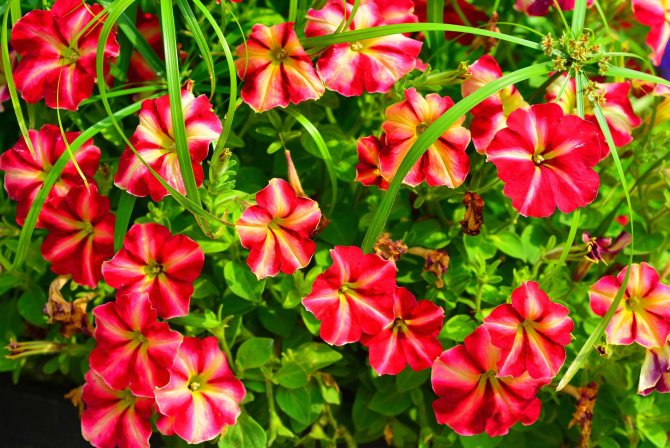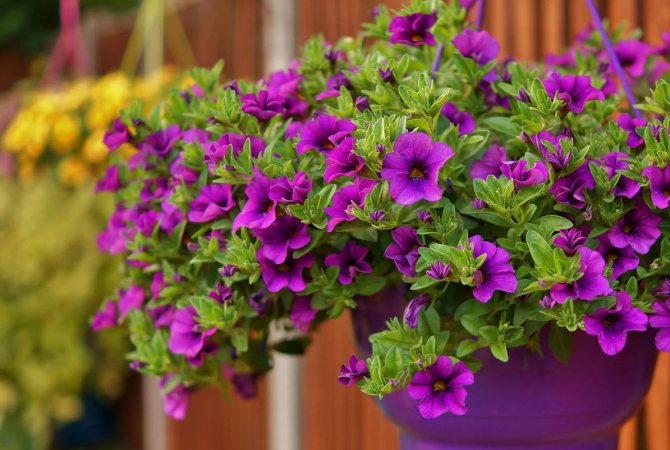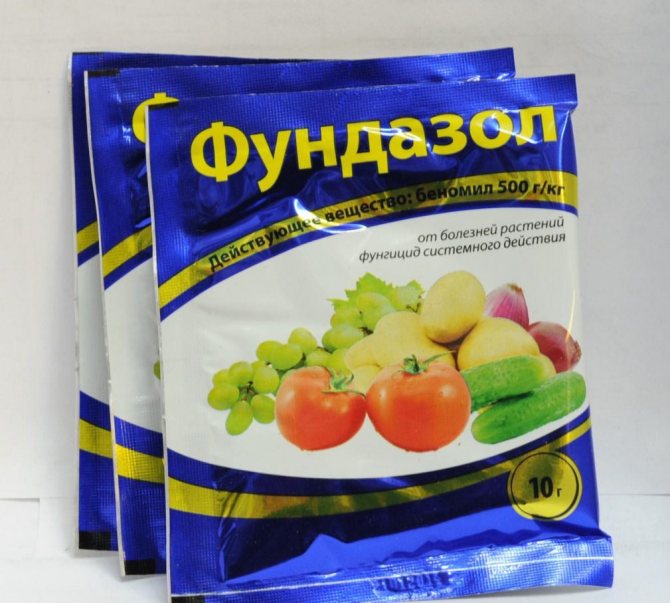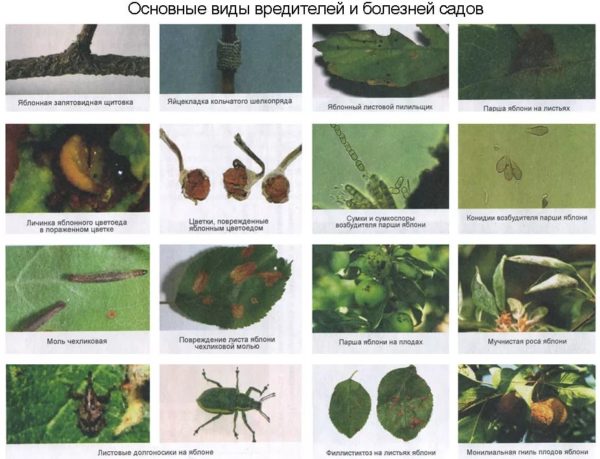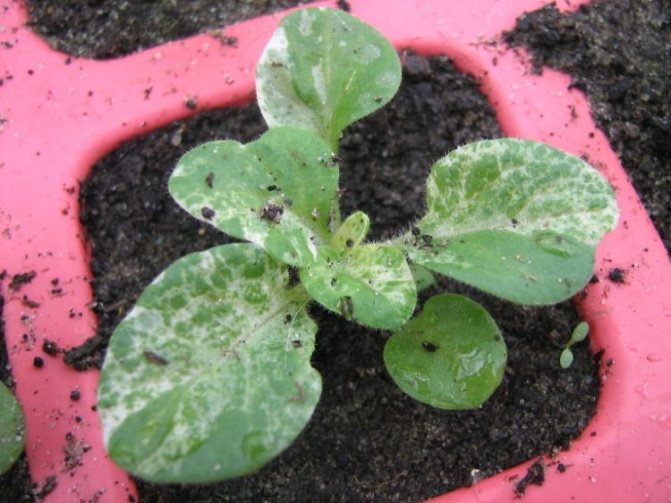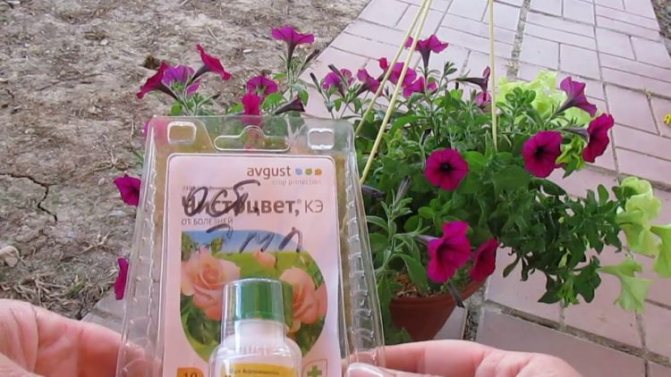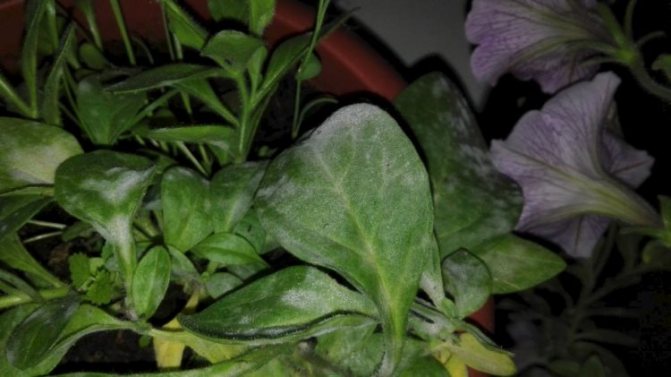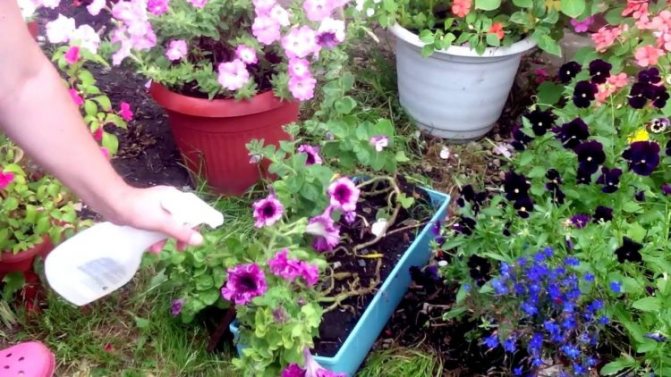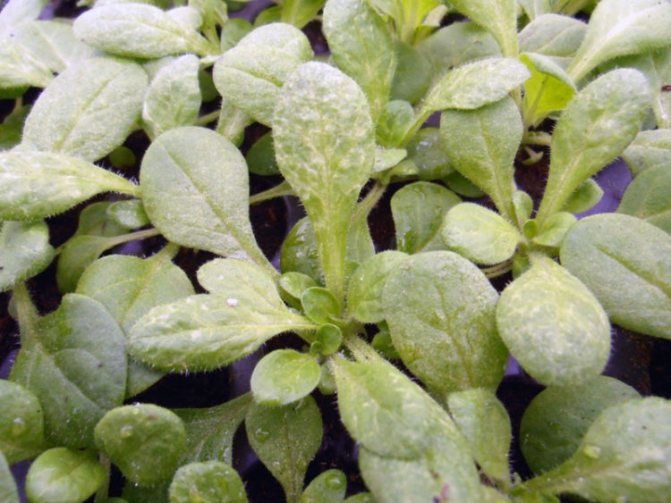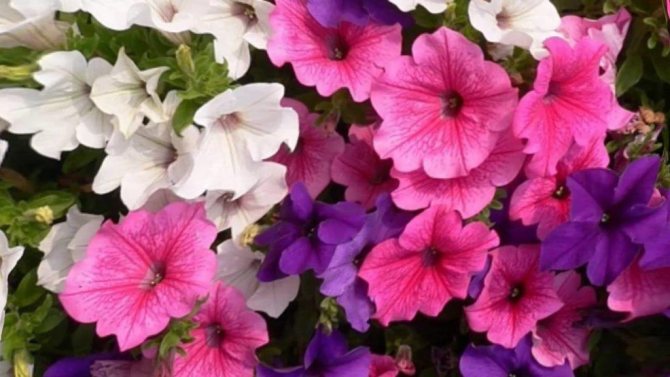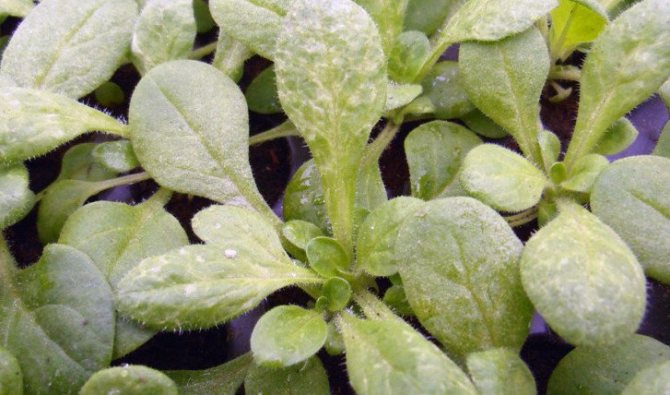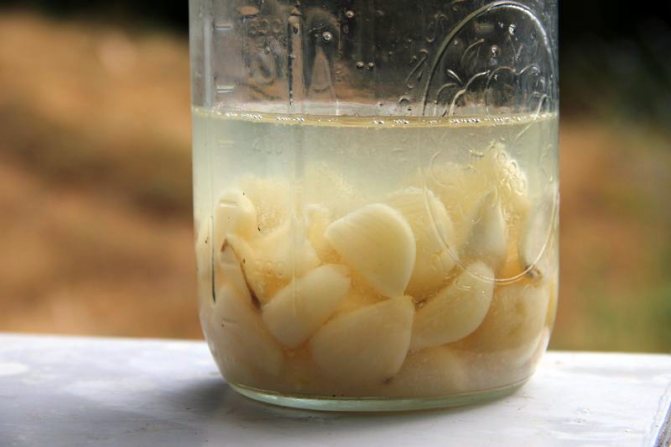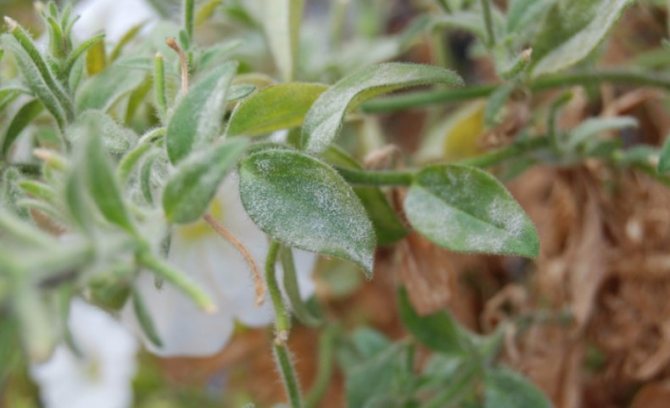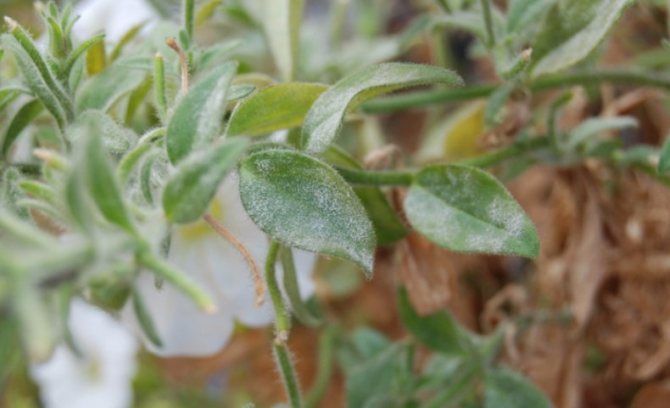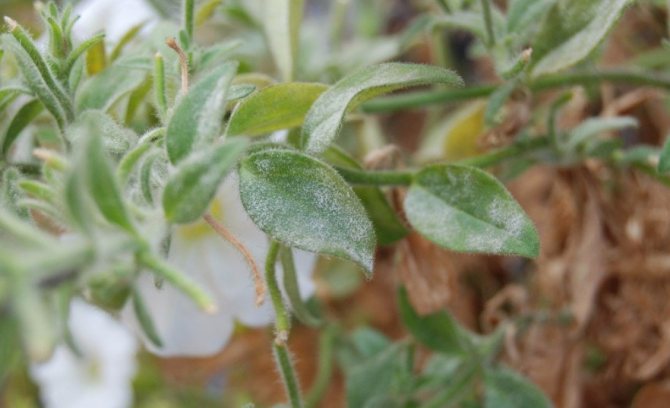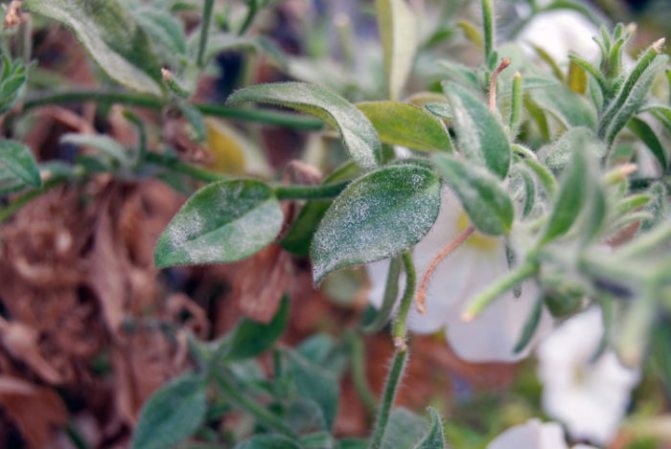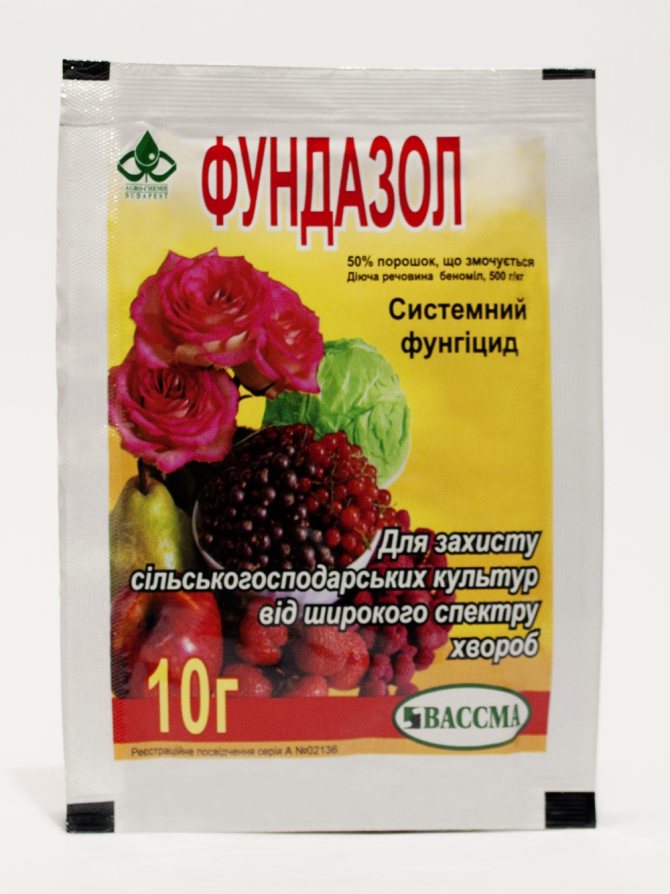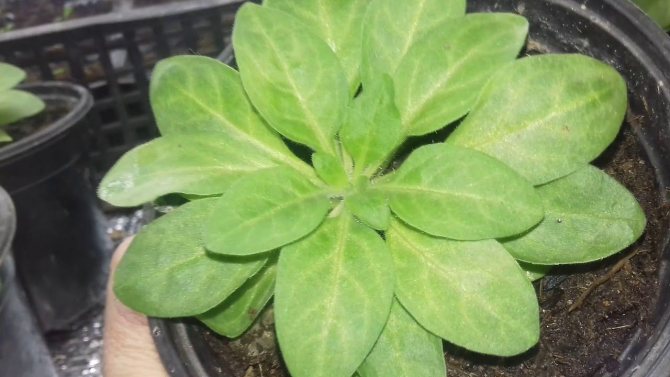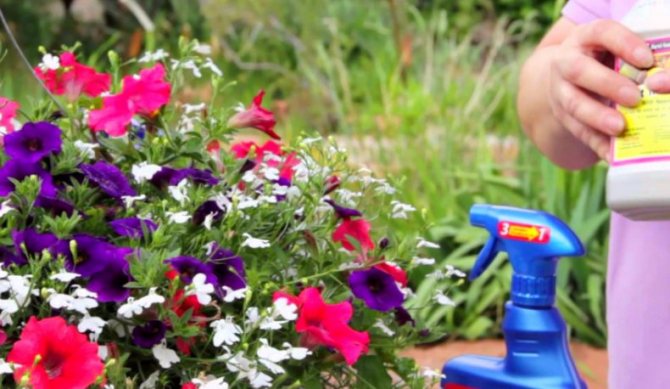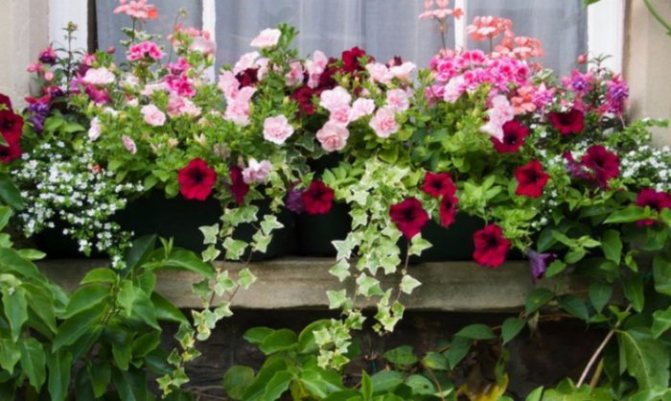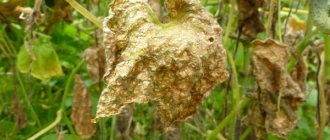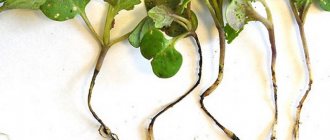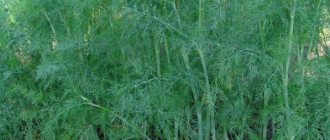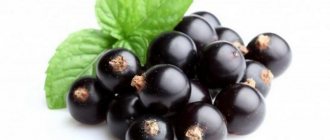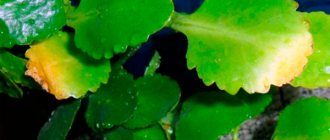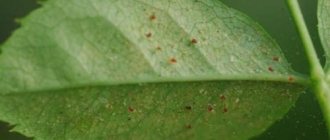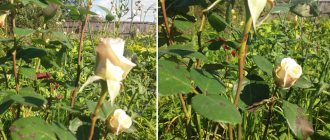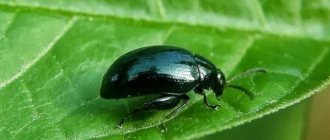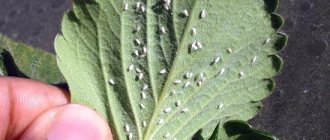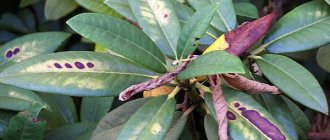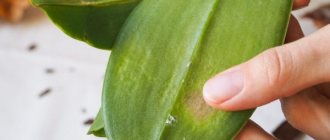Despite the fact that many varieties and hybrids of petunias are quite hardy and resistant to adverse factors, amateur flower growers are well aware of the high sensitivity of these South American "beauties" to violations of agricultural technology (excessive watering, hypothermia, overfeeding with fertilizers, thickened planting) or inappropriate soil and climatic conditions. In addition, the deterioration of petunias, like other plants, can be caused by fungi, viruses, bacteria and insect pests.
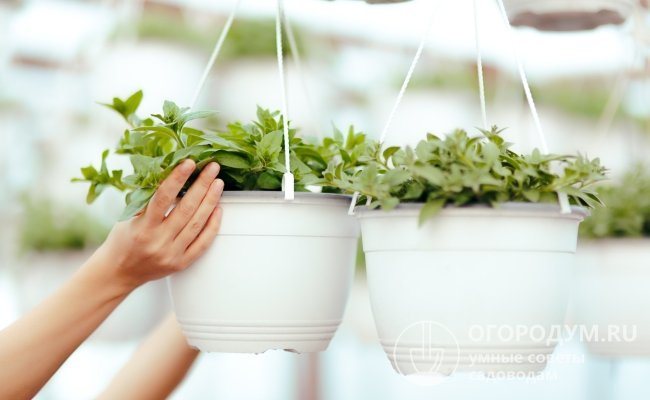
Experienced florists unmistakably determine the specific diseases of petunias by their characteristic features.
Today we will talk about the most common diseases of culture, their symptoms and causes of occurrence, we will give useful recommendations on the effective treatment of petunia diseases and the main preventive measures. And also let's talk about ways to combat insect pests of these luxurious flowers.
Diseases
Petunia is a hardy plant, despite its unpretentiousness. But there are situations when she gets sick. Most often it is fungal or infectious. They are very difficult to treat, so it is better to take preventive measures in advance and prevent the development of an unpleasant process.
Blackleg
This ailment is common. It can be recognized by its dark and soft stem. The reason for this may be a dense planting of petunias, humid air or soil with an acidic reaction. The black leg is not treated. The affected plant is discarded.
Important! Only at the initial stage of the disease can you try drugs based on oxadiccyl, metalxyl or mancozeb.
Gray rot
This disease occurs when there is insufficient or excessive application of nitrogen to the soil, excessive humidity in the air and earth. The culprit of the pathology is a fungus that lives in the ground. It seeps through the roots and inflicts damage to the entire ground part of the flower.
You can recognize the disease by symptoms such as spots on leaves and twigs. They resemble a rash in appearance. Then the spots are dried, and a gray bloom remains on the surface of the leaves. Medicines such as Integral and Skor will help to defeat the disease..
Brown spot
Under the condition of high humidity in the air and soil, brown spotting occurs. It can be detected by the presence of brown spots on petunia leaves. The main reason is the stagnation of excess moisture. To combat the disease, a copper-based drug is used. Processing is carried out 2-3 times with an interval of 7-10 days.
Powdery mildew
Due to sudden changes in temperature, excess moisture or lack of light, powdery mildew appears on the petunia bushes. It can be recognized by the white bloom that covers the leaves and stems of the crop. In the process of treatment, remove the affected parts of the plant, remove the top layer of soil, disinfect the remaining, and treat the plantings with chemicals Topaz or Fundazol.
Read more about how to deal with powdery mildew on petunias here.
Chlorosis
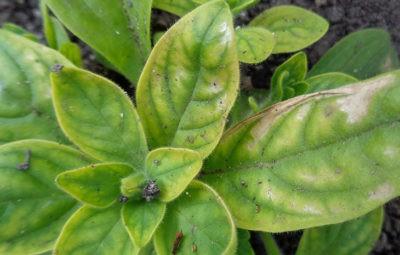

Chlorosis is not a disease, but most likely the result of improper care... At first, the leaves become light, and light spots form on the flowers. After the growth of the plant stops, and in severe cases, the petunia dies.
The danger of chlorosis is that the plant after it is difficult to recover, retains a depressed appearance for a long time and may die. So, to proceed to treatment immediately after the detection of a lesion. How to treat chlorosis? For this, flower growers use a homemade composition obtained from 7.5 g of copper sulfate and 12 g of citric acid. The solution turns light yellow. Take 1 tsp. solution and combine with 3 liters of water. Watering at the root.
Attention! Carry out therapeutic measures every 2 days for 7 days.
You can find out more about why petunia leaves brighten and turn white in this article.
Why do flowers stretch out?
Very often, the petunia is drawn out even before the first leaves have formed. This can be influenced by the main reasons:
- high or low temperature;
- low humidity;
- lack of light;
- growing petunias in containers with high edges.
What if the petunia is stretched out? At the initial stage, it is necessary to create full-fledged microclimate conditions, as well as pick plants in separate containers. In addition, the following recommendations will help:
- with the formation of cotyledon leaves, reduce the temperature indicators to 20 degrees Celsius;
- when the first leaf appears, increase the daylight hours to 8 hours;
- during this period, fertilizing in the form of a complex fertilizer, which contains calcium for flower rooting;
- after picking the plant, lower the temperature indicators to 16-18 degrees Celsius;
- for dived seedlings, daylight hours should be as long as possible.
Downy mildew
Downy mildew
Downy mildew exists along with the usual one. It affects only the green areas of the plant, its plaque is somewhat "fluffier" than that of the usual one. If powdery mildew appears at low air temperatures and high humidity, then a false disease appears with a lack of moisture.
Fight against false mealy
If the flower garden is struck by false mealy, you can apply the following treatment methods:
- Pour 10 drops of iodine and 1 liter of cow's milk into a bucket of water, mix everything well and treat diseased specimens;
- Spray with polycarbocin solution;
- Spray with copper oxychloride solution.
Any of these formulations are sprayed on the plant by drip.
Photo
Further you can see the photos of diseased plants and pests on them:
Preventive measures
The best way to combat powdery mildew is disease prevention. Of course, in order to avoid problems, you can plant varieties of petunias that are resistant to fungal diseases. But if you do not adhere to the elementary rules in caring for plants, then plants with genetic immunity will not resist diseases. Therefore, first of all, try to provide the plants with proper care:
- Water the petunias only after making sure the clod is dry enough but not dry. Use warm, settled water to water the plants.
- Planting must be periodically thinned out, first of all, removing sluggish shoots (what to do if the petunia withers and why is this happening?).
- When feeding petunias, keep the proportions and do not get carried away with nitrogen-based fertilizers.
- Give preference to potassium-phosphorus mixtures, they contribute to the development of the immunity of petunias.
- Inspect your petunia plantings daily.
- Spray plants with biofungicide periodically. You can use "Fitosporin" or "Pseudobacterin".
Observing these simple rules, you can give plants a long life, and yourself the joy of the positive results of your work.
Experienced gardeners know that most diseases develop on plants due to insufficient care... Be attentive to your plantings, take quite a bit of time for daily inspection of the plants, and they will thank you with lush flowering, becoming a true decoration of both flower beds and balconies.
If you find an error, please select a piece of text and press Ctrl + Enter.
Treatment
Folk remedies
From fungus
How to treat fungal diseases of petunia with folk remedies? To do this, you can try the following recipes:
- Combine 20 g of soda ash and 5 g of dishwashing liquid. Dissolve in 5 liters of hot water. Spray petunia and soil with a cooled solution.
- Pour 30 g of chopped garlic with 1 liter of water. Wait 1 day, filter and apply for spraying.
- Pour 40 g of mustard powder with 10 liters of water. The ready-made solution is sprayed on the plant.
- Pour 100 g of horsetail with 1 liter of water. Wait 1 day. Boil the mixture for 2 hours over low heat, cool and filter. Pour into a container with a spray, having previously combined with water 1: 5, and process the petunia every day.
- Dilute the whey with water in a ratio of 1:10. Use the resulting product for spraying. The solution forms a film on the leaves and stems, which complicates the respiration of the mycelium. In addition, the culture itself receives useful substances and heals. Handle petunias in dry weather, 3 times with an interval of 3 days.
- Take 100 g of field horsetail, pour 1 liter of boiling water. Leave for 1 day. Then set on fire and simmer for 1-2 hours. Filter, cool and dilute with water (1: 5). Apply to spraying bushes. Treat regularly, as the solution creates protection against powdery mildew. For treatment, 3-4 times a day is enough with an interval of 5 days.
From pests
To combat them, the following folk recipes remain effective.:
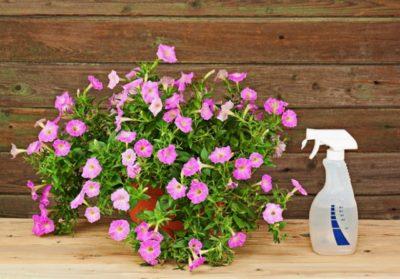

Combine liquid soap and water in equal proportions. Spray the plant every other day for 3-4 days.- Tear off tomato leaves, put them in a bucket, pour water (1: 1), leave for 2 hours, filter and use for spraying.
- Take 20 g of soap, 3 cloves of garlic, 500 ml of water and 5 ml of vegetable oil. Combine all components, and use the resulting solution to spray the petunia bush.
- Take potato tops and water in a 50:50 ratio, add 50 g of liquid soap. Apply for spraying.
- 500 g tobacco, 50 ml liquid soap. Dissolve everything in 10 liters of hot water. Wait for the solution to cool, filter and start processing.
Medicines
To combat petunia pests and diseases, you can use the following drugs:
- Aktara... The main component is thiamethox. It is characterized by an improved mechanism of action and completely eliminates all parasites. To prepare the solution, take 2 liters of water and 600 ml of the drug. Spray the plant, and reuse the drug after 10 days.
- Confidor... It is a contact-intestinal insecticide with a wide range of effects. It can be used for soil treatment and flower spraying. effective against many pests. To prepare the solution, take 10 liters of water and dissolve 1 g of the drug.
- Speed... This fungicide is effective against powdery mildew scab, gray mold, spotting. To prepare the solution, take 10 liters of water and 2 ml of the drug. Carry out the processing 3 times with an interval of 20 days.
- Maxim... This drug, in which the active substance is fludioxonil. It is used to combat rot, fusarium wilting. To prepare the solution, take 4 ml of the drug and dilute in 2 liters of water.
Prophylaxis
As you know, any disease is easier to prevent than to cure. This applies to flowers in the same way. To prevent powdery mildew, petunia bushes should not be planted very densely so that there is good ventilation, and also monitor the irrigation regime with special care. You cannot completely dry out a clod of earth and then water thoroughly. Or, conversely, do not let the soil dry out. In such cases, the plant's immunity decreases. The following substances can be used to prevent the disease:
- Ash.Wood ash is infused in water (1 kg of wood ash, 10 liters of warm water) for seven days, then drain the solution from the sediment and add shavings of laundry soap (for this amount of the resulting solution - 2 tablespoons) and then process the petunia from a spray bottle. The remaining sediment (ash) can be poured onto the soil under the root of the plant.
- Onion peel. They make an infusion: you need to take about 200 grams of husk in a bucket of very hot water and leave for 2 days. Spray the plants with the strained infusion. This method can be used before the flowers appear.
How to treat insects?
- Whiteflies... These are small insects that cannot be overlooked. It is enough just to touch the flower, and a large number of midges will fly out from there. In addition, the flowers begin to turn yellow and wither. To fight insects, use the preparations Confidor and Aktelik.
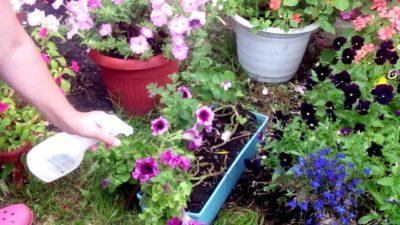

Aphid... These pests are among the most common. To determine their presence, you just need to look at the bush: clusters of aphids cover the stem and leaves with a dense layer. As a result, they twist and deform. For the fight, such drugs are used: Decis, Confidor and Aktara.- Spider mites... These insects do a lot of harm to petunias. With their invasion, a general oppression of the plant occurs and a thin web is present around them. To combat spider mites, Demitna, Appolo, Neoron are used. When processing a flower, make sure that the solution gets on the inside of the leaf plate.
Pests threatening the flower
Spider mite
The pest is dangerous because after killing one plant, the entire colony will easily jump to another.
Symptoms:
- whitish spots (insect discharge),
- the appearance of a cobweb,
- from the inside of the leaves you can see a lot of black dots,
- the leaves become excessively sticky,
- bite marks on the leaves (yellow or dry spots - by the way, on this basis you can "catch" other insects - pests),
- dry and falling leaves (the most advanced stage).
Poisons - acaricides will help you in the fight against a tick. Not a bad example: Demitan, Neoron, Apollo. If there are few ticks, you can start with a dandelion tincture: 1 liter of water, 30 g of flowers, leave for 2 hours.
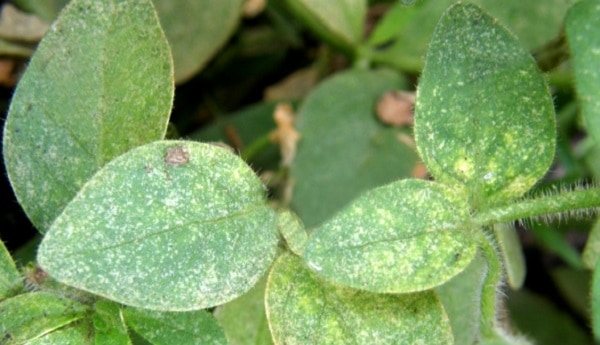

Thrips
These pests are already more impudent - they can be seen both from the inside and on the front of the leaves. You can also guess about insects by:
- dry stripes on the leaves,
- deformed leaves,
- black or green dots (remnants of the vital activity of pests) on top of the leaves,
- as well as a dying plant.
You will need insecticides to fight. It can be a classic remedy ("Confidor", "Aktara" - they are strong, but very "vigorous" both in smell and in toxicity), or a bio-insecticide ("Spintor-240").
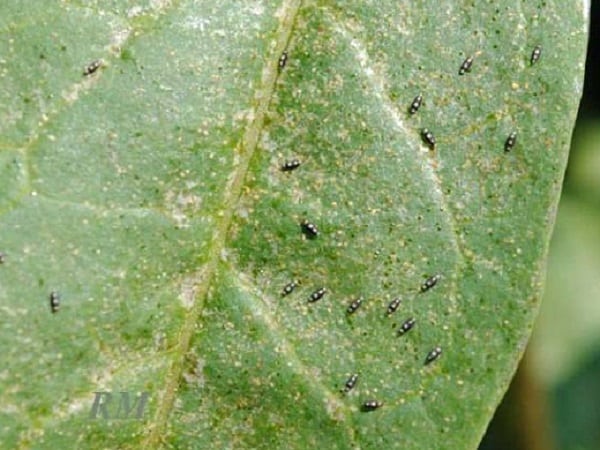

Why do plants disappear and what to do?
There are situations when a young petunia begins to die, not even having time to bloom, the reasons why this happens:
- Lack of moisture and fresh air... It is necessary to regularly ventilate the room where the flower is located.
- Blackleg... This is a dangerous fungus that often infects petunia seedlings. It will no longer be possible to save the plant, so you will have to get rid of it.
- Yellowing of seedlings... This is an alarming symptom that requires urgent action, otherwise the flower will die. The cause of yellowness remains chlorosis, or rather a lack of iron. To solve the problem, feed the petunia with iron-based preparations and do not moisturize the soil too much.
- Dense planting... Because of this, there is little space for plants, they do not receive full nutrients, sunlight. It is necessary to transplant them into a larger container, and after a few days add boron and phosphorus fertilizing.
- Pests... With an invasion of parasites, petunia can die. Most often, pests affect those plants that are grown in a greenhouse.The flower suffers greatly from thrips, aphids, whiteflies. You can recognize these parasites by carefully observing young plants.
Diseases associated with excess moisture
Why do the leaves of a Chinese rose or hibiscus disease turn yellow
It is not difficult to grow a flower if you adjust the watering regime. Then there will be no problems with diseases that are associated with excess moisture:
- decay of the root system;
- from an excess of moisture, petunia leaves turn yellow;
- the bush begins to fade and shed buds and leaves.
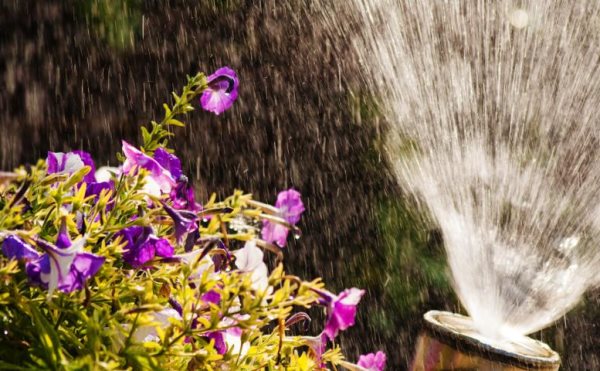

Diseases due to watering
By adjusting watering, you can get rid of negative manifestations.
How to revive?
If the petunia began to fade, its leaves drooped, then urgent measures must be taken to save it. Procedure, how to reanimate a flower:
- Cut off any remaining bushes on the ground, leaving only a few leaves.
- Take a pot and add earth, some eggshells.
- Plant petunia and water thoroughly with Energen's solution.
- Place the pot in the room on the floor or on the balcony for 4 days.
- After 2 weeks, the plants will begin to revive and grow.
Potassium
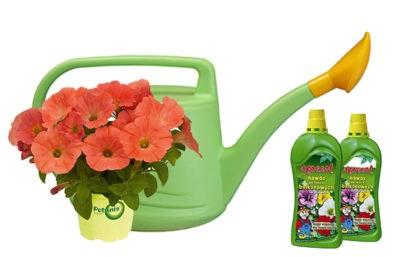

When fertilizing petunias, be sure to use potassium-based preparations. The fact is that this trace element has a positive effect not only on the growth and development of a plant, but also on flowering. This allows you to get lush buds that will delight with their beauty for a long time.
Add potassium after the petunia has been transplanted to a permanent location. After 10-14 days, you can make the first top dressingusing potassium monophosphate (5 g per 10 l of water).
Advice! Diseases and pests do not affect petunia so often if the grower pays proper attention to this flower. And for this, it is necessary not only to fully care for him, but also to carry out preventive treatment on time.
Petunia can be affected by other diseases as well. You can read about them in the following articles:
- Sticky leaves.
- Drying out.
- The plant withers.
- Yellowing of the leaves.
Causes of occurrence
Usually, the disease develops with concomitant weather conditions and improper plant care. The fungus itself lives in the soil. It does not manifest itself in warm and dry weather, if the rules of plant care are carefully followed. But if conditions are unfavorable, whole fungal colonies develop, which very quickly infect the plant.
Fungi - parasites feed on the sap of the plant, leaving no nutrients to it. The causes of the disease are usually:
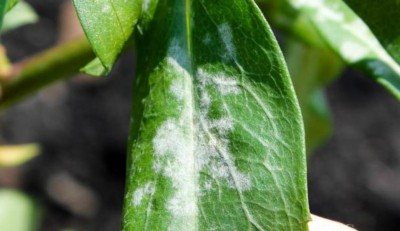

- Cool weather and high humidity. If at the same time there is also a deficit of sunlight, the conditions for healthy plant growth become extremely unfavorable.
- High nitrogen content in the soil.
- Frequent planting of plants, therefore, insufficient air circulation between them.
- Watering regime is not observed. Do not water the plants too often. It is unacceptable to flood the plant too much after a long drought. These actions destroy the plant's immunity, and, as you know, diseases most often affect weakened plantings.
If you find plants affected by powdery mildew on an area, it is important to remember that one of the ways the disease spreads is through the airborne spores.

